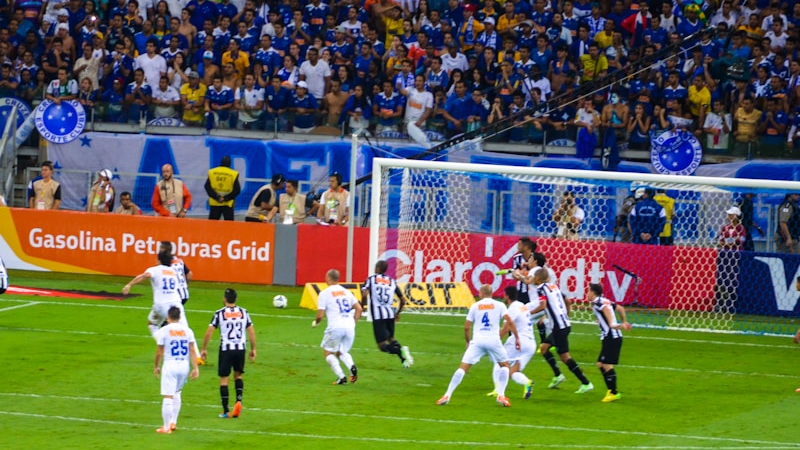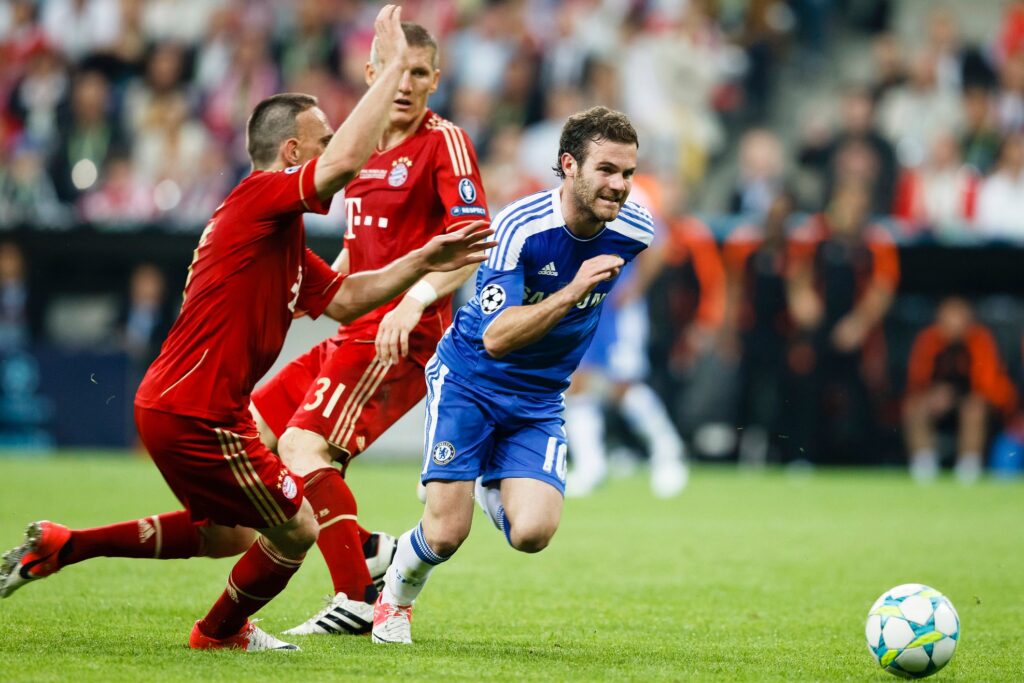In Part 1, we challenged the idea that soccer is just an endurance sport. We showed that muscular strength isn’t just helpful—it’s essential for lowering the energy cost of movement, protecting against injury, and preserving late-game performance.
In Part 2, we dug into the physiology behind that claim, explaining why maximal aerobic speed (MAS)—not VO₂ max—is the real key to endurance on the field. We also showed how strength training improves mechanical efficiency, oxygen utilization, and sprint economy without the need for extra conditioning volume.
So now the question becomes: how do you put this into practice?
The Solution to Missing Game Speed

Coaches and athletes can’t afford to ignore missing speed. It is also a problem that cannot be “conditioned” away, as we’ve seen. The reality is that an athlete with power in each step is more efficient and can use their engine much better than one who is always worried about endurance.
Strength and speed should be the primary physical focus for most developing athletes, even in endurance sports like soccer. Note that I didn’t say “ignore endurance work”. Endurance work is important, but you need large chunks of the year where it is not the biggest PRIORITY in terms of time spent training.
Trying to simultaneously train everything equally hard will either break an athlete, burn them out, or stall them out. “More” is very clearly not “better.” Yet, this is what many sport coaches and athletes try to do. It is impossible in the long run. “Fitness” is not one-size-fits-all.
A Real World Example
Sure, you think: “All this makes sense in theory, but it just doesn’t work that way in real life.” Fair enough. Here’s a prime example for you of a soccer player we train and how he improved the past year. We’ll call him John:
John was a varsity soccer player who was consistently beat up. Knees, back, tendonitis, you name it. He was a great kid – listened well, super coachable, hard worker.
The problem was that he was such a hard worker he never took any rest. Ever. He played year round: club, high school, winter ball. He ran all the time because he was conditioning on every team and trying to keep up his “fitness” in between as well. He was chronically undersized.
John needed a change. Here’s what his week looked like:
- Only 2 traditional distance runs – no conditioning circuits
- The rest of the week focused on strength with plyometrics (3 workouts)
- 2 sprint sessions: bounding + 5 total reps of 40 yds w/ 3-4 min rest between each
- Two full days of complete rest every week were enforced
Real Results
Two months after his season ended, John’s 2-mile time trial dropped by almost a FULL MINUTE from last year… while being 30 lbs heavier and much stronger than the previous season.
Sure beats 4-5 days of long mileage and feet smacking concrete.
He was within 10 seconds of his all-time best at a weight he had never been at before. He jumps 6” higher too. His squat skyrocketed. He benches 40 lb more. He also scored his highest total on the Yo-Yo IR1 test ever. All of this at 30 lbs heavier – this isn’t an accident.
Oh, and he’s been recruited to play college soccer now.
What were the 2 things that happened? First, he took an actual off-season to get better instead of play more games, and second, he bought in to the training program.
These types of results are repeatable. We do this all the time – provided the athletes commit to letting us. The biggest barrier to improvement is the stubborn belief that soccer players need to play all year and just condition or run all the time to be fit.
Understanding the physiology needs and rotating priorities of an athlete is essential. That’s the importance of having a professional strength coach over a CrossFit gym or general fitness trainer.
How do you plan for strength training?
Developing athletes (high school or younger) and their coaches or parents have to commit to 2 things for improvement:
- Time
- The off-season is critical. That’s the time where the most rapid improvements can be made.
- There needs to be at least 4 months out of the year where conditioning takes a back seat.
- This time should be in bigger chunks rather than smaller ones.
- Focus
- During these 4 months you spend very little time on endurance training.
- Food, recovery time must be used for getting stronger and faster, not conditioning.
- Technical skill sessions fine, as long as they stay skill sessions instead of turning into cardio.
To be clear, I don’t mean 4 months total out of the year. I mean 4 months of USEABLE time blocked off. Having 2-3 weeks between club and varsity seasons is not enough. 2-3 weeks is essentially the minimum time required to heal from season wear and tear.
Research is very clear: developing athletes who do not have a MINIMUM of 4 months off-season each year are at increased risk of injury and do not progress as well in their sport. They suffer more overuse injuries and more surgical operations than their peers. They also improve more slowly at their sport performance.
If the off-season doesn’t exist – or if a player is too afraid of getting out of game shape to take a real, actual off-season – they forfeit the best opportunities to improve. You cannot get faster with endurance training. By definition they are two separate traits.
In addition, every endurance training session you perform takes away recovery resources from strength and speed. We all have the same 24 hours in a day – spread yourself too thin and you improve at nothing because you don’t have enough resources (food, sleep) to build improvements. That’s the folly of trying to focus on everything all the time.
Programming guidelines for endurance athletes
It’s impossible to give perfect universal rules. The specifics will always depend on analysis of an individual athlete – that is, after all, why professional strength coaches are so crucial for athletes. If CrossFit or generic fitness routines could get athletes to the top, no university would spend the millions of dollars that they do on training staff.
However, there are some general guidelines for effective strength training. Here they are:
- Dose & load
- 2 – 3 sessions · wk⁻¹, 3–5 sets × 3–6 reps at ≥ 80 % 1 RM on major lifts.
- Pair with 15 – 30 s maximal plyometric contacts to target tendon stiffness.
- 1-2 sprint workouts per week. 2 is best.
- No more than 2 endurance training sessions a week during this period
- Exercise selection
- Primary Lower: back or front squat, trap-bar deadlift, split squat, hip thrust.
- Primary Upper: bench press, barbell or dumbbell row, chin-up, overhead press
- Accessory Lower: Nordic curl, step-up, calf raise, hamstring curl, core anti-extension/rotation.
- Accessory Upper: push-ups, triceps extensions, pulldowns, shoulder raises, bicep curls
- Sequencing
- Never do speed, strength, and endurance all on a single day.
- On concurrent days, strength goes first. Strength → endurance preserves strength gains without blunting VO₂ max adaptations.
- On concurrent days, speed → strength is ideal but if schedules conflict they can be flipped.
- On concurrent days, separate workouts by at least 4 hours.
- Have at least 1 complete rest day in the week, preferably 2.
- Monitor body-mass trends
- Fuel the body for performance at all times, not weight loss. They need more than you think.
- High protein – need to gain muscle, not just maintain.
- High carbs – using a lot of fuel to train frequently, and can accidentally drop weight if not really eating consistently
Soccer players need significantly more food than most realize in order to counteract all the running they do. If the athlete is underweight, prioritize muscle hypertrophy with strength as well as high calorie intake. For trianing, use moderate volume, high intensity sets with full recovery.
Cautions
If you’re a sport coach or a parent, there are some important cautions for this:
First, these guidelines do not include introductory periods. An athlete who is inexperienced in strength training should NEVER start out with maxing their lifts or doing high intensity plyometrics such as depth jumps.
You have to increase training intensity slowly – that’s one reason 3-4 months are required to build up. It’s the same reason no good team coach would kill his players on the first day of practice.
Second, these guidelines also assume an athlete already has good form (rare) during very hard exercises (more rare) and understands how to land correctly from plyometrics (also rare).
Third, you have to measure improvement on the scale of years not weeks. Again, strength and speed develop much more slowly than endurance. You have to understand the investment being made. An athlete can get into game shape in 4-8 weeks, but it takes months of work to build muscle and neural qualities for speed.
It is critical to have focused time prioritizing strength; that’s also why it’s important to lift year round, even in-season.
Fourth, NEVER go straight to high impact plyometrics from zero experience. Landing mechanics will make or break you as an athlete.
Finally, these guidelines are for developing athletes, not for already elite pro or college athletes. If you have a yo-yo test score less than ~1700 m or a mile run time longer than about 6:00, you are developing, not elite. The yo-yo test is more sport specific and a better gauge.
And if you don’t know what those tests are well… you’re not an elite athlete yet.
The Bottom Line
By shrinking the metabolic price of every stride, well-planned strength work raises maximal aerobic speed, prolongs time to exhaustion, and widens the bandwidth for tactical surges—all without stealing significant training time from endurance.
Strength won’t magically take a player from 60 to 70 mL/kg/min in VO₂ max—but that’s not the point.
What it does do is let players cover more ground per breath, delay fatigue, and maintain power output longer. Developing players often lack power more than they lack lung capacity. In other words: stronger players look fitter on the field.

That means:
- Less effort per sprint
- More total distance covered
- Prolongs time until exhaustion hits
- Fewer breakdowns in mechanics and decision-making late in matches
If you want more than just “tough workouts” and endless circuits, this is where you start. Don’t settle for generic fitness. Good performance coaches assess athletes. They understand physiology and how to rotate priorities – if you’re a team coach, they can be a huge asset to you.
Find someone who understands both the demands of the game and the science behind performance. They can save you both time and injuries, because that’s where real progress lives.
Selected References
- Støren Ø. et al. Maximal strength training improves running economy in distance runners. J Strength Cond Res (2008). pubmed.ncbi.nlm.nih.gov
- Sunde A. et al. Maximal strength training improves cycling economy in competitive cyclists. J Strength Cond Res (2010). pubmed.ncbi.nlm.nih.gov
- Balsalobre-Fernández C. et al. Effect of strength-training programmes in middle- and long-distance runners: a systematic review. J Sports Sci (2025). pubmed.ncbi.nlm.nih.gov
- Ren Z. et al. Inspiratory muscle training improves respiratory strength and exercise tolerance in amateur runners. Life (Basel) 15:705 (2025). pmc.ncbi.nlm.nih.gov
- Yamagishi T. et al. Determinants of maximal aerobic performance: roles of lower-extremity muscle size and strength. PLOS ONE 17:e0262507 (2022). journals.plos.org

